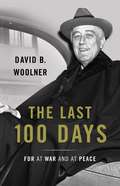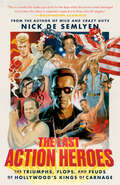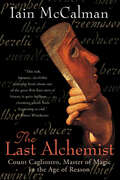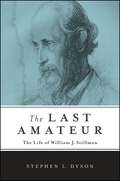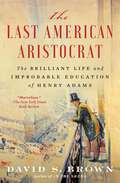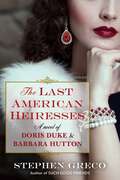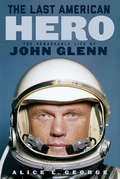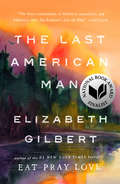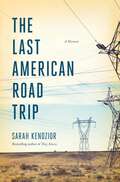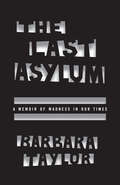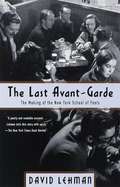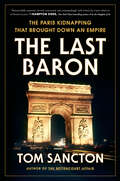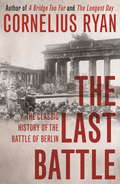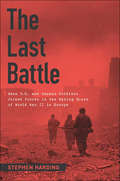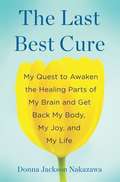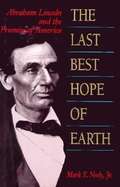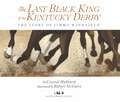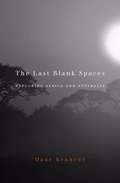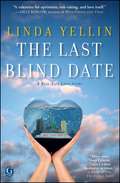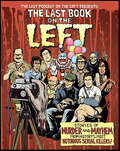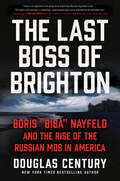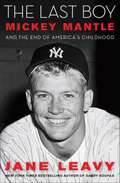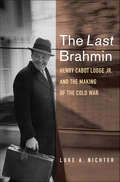- Table View
- List View
The Last 100 Days: FDR at War and at Peace
by David B. WoolnerA revealing portrait of the end of Franklin Delano Roosevelt's life and presidency, shedding new light on how he made his momentous final policy decisionsThe first hundred days of FDR's presidency are justly famous, often viewed as a period of political action without equal in American history. Yet as historian David B. Woolner reveals, the last hundred might very well surpass them in drama and consequence.Drawing on new evidence, Woolner shows how FDR called on every ounce of his diminishing energy to pursue what mattered most to him: the establishment of the United Nations, the reinvigoration of the New Deal, and the possibility of a Jewish homeland in Palestine. We see a president shorn of the usual distractions of office, a man whose sense of personal responsibility for the American people bore heavily upon him. As Woolner argues, even in declining health FDR displayed remarkable political talent and foresight as he focused his energies on shaping the peace to come.
The Last Action Heroes: The Triumphs, Flops, and Feuds of Hollywood's Kings of Carnage
by Nick de SemlyenThe behind-the-scenes story of the action heroes who ruled 1980s and &’90s Hollywood and the beloved films that made them stars, including Die Hard, First Blood, The Terminator, and more.&“This book takes you so close to the action that you can smell the sweat, cigar smoke, and bad cologne that brought these movies to life.&”—Paul ScheerThe Last Action Heroes opens in May 1990 in Cannes, with Arnold Schwarzenegger and Sylvester Stallone waltzing together, cheered on by a crowd of famous faces. After years of bitter combat—Stallone once threw a bowl of flowers at Schwarzenegger&’s head, and the body count in Schwarzenegger&’s Commando was increased so the film would &“have a bigger dick than Rambo&”—the world&’s biggest action stars have at last made peace.In this wildly entertaining account of the golden age of the action movie, Nick de Semlyen charts Stallone and Schwarzenegger&’s carnage-packed journey from enmity to friendship against the backdrop of Reagan&’s America and the Cold War. He also reveals fascinating untold stories of the colorful characters who ascended in their wake: high-kickers Chuck Norris and Jackie Chan, glowering tough guys Dolph Lundgren and Steven Seagal, and quipping troublemakers Jean-Claude Van Damme and Bruce Willis. But as time rolled on, the era of the invincible action hero who used muscle, martial arts, or the perfect weapon to save the day began to fade. When Jurassic Park trounced Schwarzenegger&’s Last Action Hero in 1993, the glory days of these macho men—and the vision of masculinity they celebrated—were officially over.Drawing on candid interviews with the action stars themselves, plus their collaborators, friends, and foes, The Last Action Heroes is a no-holds-barred account of a period in Hollywood history when there were no limits to the heights of fame these men achieved, or to the mayhem they wrought, on-screen and off.
The Last Alchemist: Count Cagliostro, Master of Magic in the Age of Reason
by Iain McCalmanFreemason ... Shaman ... Prophet ... Seducer ... Swindler ... Thief ... HereticWho was the mysterious Count Cagliostro?Depending on whom you ask, he was either a great healer or a dangerous charlatan. Internationally acclaimed historian Iain McCalman documents how Cagliostro crossed paths -- and often swords -- with the likes of Catherine the Great, Marie Antoinette, and Pope Pius VI. He was a muse to William Blake and the inspiration for both Mozart's Magic Flute and Goethe's Faust. Louis XVI had him thrown into the Bastille for his alleged involvement in what would come to be known as "the affair of the necklace." Yet in London, Warsaw, and St. Petersburg, he established "healing clinics" for the poorest of the poor, and his dexterity in the worlds of alchemy and spiritualism won him acclaim among the nobility across Europe.Also the leader of an exotic brand of Freemasonry, Count Cagliostro was indisputably one of the most influential and notorious figures of the latter eighteenth century, overcoming poverty and an ignoble birth to become the darling -- and bane -- of upper-crust Europe.
The Last Amateur: The Life of William J. Stillman (Excelsior Editions)
by Stephen L. DysonFinalist for the 2014 ForeWord IndieFab Book of the Year Award in the Biography CategoryThis fascinating biography tells the story of William J. Stillman (1828–1901), a nineteenth-century polymath. Born and raised in Schenectady, New York, Stillman attended Union College and began his career as a Hudson River School painter after an apprenticeship with Frederic Edwin Church. In the 1850s, he was editor of The Crayon, the most important journal of art criticism in antebellum America. Later, after a stint as an explorer-promoter of the Adirondacks, he became the American consul in Rome during the Civil War. When his diplomatic career brought him to Crete, he developed an interest in archaeology and later produced photographs of the Acropolis, for which he is best known today. In yet another career switch, Stillman became a journalist, serving as a correspondent for The Times of London in Rome and the Balkans. In 1871, he married his second wife, Marie Spartali, a Pre-Raphaelite painter, and continued to write about history and art until his death. One of the later products of the American Enlightenment, he lived a life that intersected with many strands of American and European culture. Stillman can indeed be called "the last amateur."
The Last American Aristocrat: The Brilliant Life and Improbable Education of Henry Adams
by David S. BrownA &“marvelous…compelling&” (The New York Times Book Review) biography of literary icon Henry Adams—one of America&’s most prominent writers and intellectuals, who witnessed and contributed to the United States&’ dramatic transition from a colonial society to a modern nation.Henry Adams is perhaps the most eclectic, accomplished, and important American writer of his time. His autobiography and modern classic The Education of Henry Adams was widely considered one of the best English-language nonfiction books of the 20th century. The last member of his distinguished family—after great-grandfather John Adams, and grandfather John Quincy Adams—to gain national attention, he is remembered today as an historian, a political commentator, and a memoirist. Now, historian David Brown sheds light on the brilliant yet under-celebrated life of this major American intellectual. Adams not only lived through the Civil War and the Industrial Revolution but he met Abraham Lincoln, bowed before Queen Victoria, and counted Secretary of State John Hay, Senator Henry Cabot Lodge, and President Theodore Roosevelt as friends and neighbors. His observations of these powerful men and their policies in his private letters provide a penetrating assessment of Gilded Age America on the cusp of the modern era. &“Thoroughly researched and gracefully written&” (The Wall Street Journal), The Last American Aristocrat details Adams&’s relationships with his wife (Marian &“Clover&” Hooper) and, following her suicide, Elizabeth Cameron, the young wife of a senator and part of the famous Sherman clan from Ohio. Henry Adams&’s letters—thousands of them—demonstrate his struggles with depression, familial expectations, and reconciling with his unwanted widower&’s existence. Offering a fresh window on nineteenth century US history, as well as a more &“modern&” and &“human&” Henry Adams than ever before, The Last American Aristocrat is a &“standout portrait of the man and his era&” (Publishers Weekly, starred review).
The Last American Heiresses
by Stephen GrecoA dazzling novel that draws readers into the ultra-glamorous lives of legendary heiresses Doris Duke and Barbara Hutton, the public rivalry that defined them, and the secret bond that sustained them both, from the author of the acclaimed Such Good Friends.The press dubs them &“the Gold Dust twins.&” Born within a week of one another in Manhattan in 1912, Doris Duke and Barbara Hutton both inherit unimaginable fortunes. By the time of their lavish coming-out balls, they are two of the richest women in the world. Barbara, heiress to the Woolworth millions, amasses seven husbands over her lifetime. Doris, meanwhile, has a sophistication and financial savvy that Barbara tries endlessly to emulate. When filmmaker Emma Radetsky begins researching her new documentary about prominent women and their jewelry collections, she&’s familiar with the lore surrounding both Doris and Barbara—the couture gowns, exotic homes, and romantic interludes—including sequential marriages to the same notorious playboy. And of course, the priceless jewels they acquire as easily as candy. Yet delving into their backgrounds with the help of one of Doris&’s closest companions, Oliver Wendell Shaw, Emma encounters a deeper story—of a private game to manipulate the media, and a hidden, life-long kinship between two complex women who understood each other as no one else could. Interweaving past and present, filled with sumptuous details from an age of excess, Stephen Greco&’s novel is also a mesmerizing story about the nature of celebrity and the transformative power of friendship.
The Last American Hero: The Remarkable Life of John Glenn
by Alice L. GeorgeOn February 20, 1962, John Glenn became a national star. That morning at Cape Canaveral, a small-town boy from Ohio took his place atop a rocket and soared into orbit to score a victory in the heavily contested Cold War. The television images were blurry black-and-white phantoms. The cameras shook as the rocket moved, but by the end of the day, one thing was clear: a new hero rode that rocket and became the center of the world's attention for the four hours and fifty-five minutes of his flight. He became celebrated in all corners of the world as not just the first American to orbit the Earth, but as the first space traveler to take the human race with him. From that day forward, Glenn restively wore the hero label. Wherever he went, people knew his name and what he had done. Refusing to let that dramatic day define his life, he went on to become a four-term US senator—and returned to space at the age of seventy-seven. The Last American Hero examines the many layers that formed the man and unravels the reasons for his singular role. He was a creation of the media, in some ways, but he was also a product of the Cold War. Not even Glenn himself seemed to fully understand his celebrity. He was a war hero, a two-time astronaut, a veteran senator, a devoted husband, a father, and much more. At a time when increasingly cynical Americans need heroes, his aura burns brightly in American memory.
The Last American Man
by Elizabeth Gilbert<P>In this rousing examination of contemporary American male identity, acclaimed author and journalist Elizabeth Gilbert explores the fascinating true story of Eustace Conway. <P>In 1977, at the age of seventeen, Conway left his family's comfortable suburban home to move to the Appalachian Mountains. <P>For more than two decades he has lived there, making fire with sticks, wearing skins from animals he has trapped, and trying to convince Americans to give up their materialistic lifestyles and return with him back to nature. <P>To Gilbert, Conway's mythical character challenges all our assumptions about what it is to be a modern man in America; he is a symbol of much we feel how our men should be, but rarely are. <P><b>Finalist for the National Book Award 2002</b>
The Last American Road Trip: A Memoir
by Sarah KendziorUSA Today bestsellerAmerican Booksellers Association bestsellerThe New York Times bestselling author of They Knew, Hiding in Plain Sight, and The View from Flyover Country navigates a changing America as she and her family embark on a series of road trips, in a book that is part memoir, part history, and wholly unique. It is one thing to study the fall of democracy, another to have it hit your homeland -- and yet another to raise children as it happens. The Last American Road Trip is one family’s journey to the most beautiful, fascinating, and bizarre places in the US during one of its most tumultuous eras. As Kendzior works as a journalist chronicling political turmoil, she becomes determined that her young children see America before it’s too late. So Kendzior, her husband, and the kids hit the road -- again and again.Starting from Missouri, the family drives across America in every direction as cataclysmic events –- the rise of autocracy, political and technological chaos, and the pandemic –- reshape American life. They explore Route 66, national parks, historical sites, and Americana icons as Kendzior contemplates love for country in a broken heartland. Together, the family watches the landscape of the United States -- physical, environmental, social, political -- transform through the car window.Part memoir, part political history, The Last American Road Trip is one mother’s promise to her children that their country will be there for them in the future –- even though at times she struggles to believe it herself.
The Last Asylum: A Memoir of Madness in Our Times
by Barbara TaylorIn the late 1970s, Barbara Taylor, then an acclaimed young historian, began to suffer from severe anxiety. In the years that followed, Taylor’s world contracted around her illness. Eventually, her struggles were severe enough to lead to her admission to what had once been England’s largest psychiatric institution, the infamous Friern Mental Hospital in North London.The Last Asylum is Taylor’s breathtakingly blunt and brave account of those years. In it, Taylor draws not only on her experience as a historian, but also, more importantly, on her own lived history at Friern— once known as the Colney Hatch Lunatic Asylum and today the site of a luxury apartment complex. Taylor was admitted to Friern in July 1988, not long before England’s asylum system began to undergo dramatic change: in a development that was mirrored in America, the 1990s saw the old asylums shuttered, their patients left to plot courses through a perpetually overcrowded and underfunded system of community care. But Taylor contends that the emptying of the asylums also marked a bigger loss, a loss of community. She credits her own recovery to the help of a steadfast psychoanalyst and a loyal circle of friends— from Magda, Taylor’s manic-depressive roommate, to Fiona, who shares tips for navigating the system and stories of her boyfriend, the “Spaceman,” and his regular journeys to Saturn. The forging of that network of support and trust was crucial to Taylor’s recovery, offering a respite from the “stranded, homeless feelings” she and others found in the outside world. A vivid picture of mental health treatment at a moment of epochal change, The Last Asylum is also a moving meditation on Taylor’s own experience, as well as that of millions of others who struggle with mental illness.
The Last Avant-Garde: The Making of the New York School of Poets
by David LehmanThe story of how four young poets reinvented literature and turned New York into the art capital of the world. A richly detailed portrait of one of the great movements in American arts and letters, the book covers the years 1948-1966 and focuses on four fast poet friends Lehman brings to vivid life the extraordinary creative ferment of the time and place and the powerful influence that a group of visual artists had on the literary efforts of the New York School.
The Last Baron: The Paris Kidnapping That Brought Down an Empire
by Tom SanctonA riveting, on-the-edge-of-your-seat tale about the notorious 1978 kidnapping of Baron Édouard-Jean &“Wado&” Empain, intertwined with the story of his famous grandfather, the first baron and builder of the Paris Métro. A multigenerational saga told against the backdrops of both Belle Époque and 1970s high-fashion Paris. What does it take to create a dynasty? What does it take to keep one going? And what does it take to save the life of the dazzling but flawed man who inherited it all? Launched in the 1880s by the first baron, the Empain industrial empire spread from Belgium and France to span more than a dozen countries. When Wado took over, he further expanded the company, became a key player in France&’s nuclear sector, and, by the mid-1970s, was one of the country&’s most powerful business leaders—a self-described &“master of the universe.&” But these were also the &“years of lead,&” marked by a rash of high-profile kidnappings around the globe, including the headline-grabbing seizure of American heiress Patty Hearst. Wado&’s vertiginous rise caught the eye of Alain Cailloll, a small-time gangster who had grown up in a wealthy family before embracing a life of crime. On January 23, 1978, Caillol and his confederates snatched the baron off the Paris streets, sure that they&’d get the 80 million francs they demanded in ransom. To show they meant business, they chopped off Wado&’s little finger and warned that more body parts would follow. But nothing unfolded as the kidnappers, or Wado himself, expected. Would Empain&’s company pay? Could his family afford this astronomical sum? How much was the life of a leader, a father, and a husband worth? Most important, could a determined police chief and his crack investigators outsmart the kidnappers? The answers to those questions unspooled over two months in a tangle of events leading to a bloody showdown whose consequences would prove fatal to the Empain dynasty.
The Last Battle: The Classic History Of The Battle For Berlin
by Cornelius RyanThe Battle for Berlin was the final struggle of World War II in the European theatre, the last offensive against Hitler's Third Reich, which devastated one of Europe's historic capitals and brought an end to the Nazi regime. It lasted more than two weeks across April -- May 1945, and was one of the bloodiest and most pivotal episodes of the war, one which would play a part in determining the shape of international politics for decades to come. THE LAST BATTLE is a story of brutal extremes, of stunning military triumph alongside the stark conditions that the civilians of Berlin experienced in the face of the Allied assault. It is history at its best, a masterful illumination of the effects of war on the lives of individuals, and one of the enduring works on World War II.
The Last Battle: When U.S. and German Soldiers Joined Forces in the Waning Hours of World War II in Europe
by Stephen HardingThe true story of US & German soldiers fighting side by side in the final days of WW II
The Last Best Cure
by Donna Jackson NakazawaOne day Donna Jackson Nakazawa found herself lying on the floor to recover from climbing the stairs. That's when it hit her. She was managing the symptoms of the autoimmune disorders that had plagued her for a decade, but she had lost her joy. As a science journalist, she was curious to know what mind-body strategies might help her. As a wife and mother she was determined to get her life back. Over the course of one year, Nakazawa researches and tests a variety of therapies including meditation, yoga, and acupuncture to find out what works. But the discovery of a little-known branch of research into Adverse Childhood Experiences causes her to have an epiphany about her illness that not only stuns her-it turns her life around. Perfect for readers of Gretchen Rubin's The Happiness Project, Nakazawa shares her unexpected discoveries, amazing improvements, and shows listeners how they too can find their own last best cure.
The Last Best Hope of Earth: Abraham Lincoln and the Promise of America
by Mark E. NeelyMark E. Neely, Jr. , gives us the first compact biography of Abraham Lincoln based on new scholarship. Neely, a Pulitzer prize-winning historian, vividly recaptures the central place of politics in Lincoln's life. Richly illustrated, nuanced and accessible, written with attention to the age in which Lincoln lived, yet ever alert to universal moral questions, this book provides a portrait of Lincoln as an extraordinary man in his own time and ours.
The Last Black King of the Kentucky Derby
by Crystal Hubbard“A biography of Jimmy Winkfield, who battled racism and other obstacles on the road to becoming one of horseracing’s best jockeys and, in 1902, the last African American to win the Kentucky Derby”.
The Last Blank Spaces
by Dane KennedyThe challenge of opening Africa and Australia to British imperial influence fell to a coterie of proto-professional explorers who sought knowledge, adventure, and fame but often experienced confusion, fear, and failure. The Last Blank Spaces follows the arc of these explorations, from idea to practice, intention to outcome, myth to reality.
The Last Blind Date
by Linda YellinA fun, charming memoir about a woman who falls in love, packs her bags, and starts over in the city that eats its young.
The Last Blind Date
by Linda YellinA fun, charming memoir about a woman who falls in love, packs her bags, and starts over in the city that eats its young.
The Last Book on the Left: Stories of Murder and Mayhem from History's Most Notorious Serial Killers
by Ben Kissel Marcus Parks Henry ZebrowskiThis “delightfully creepy” New York Times bestseller from the award-winning horror-comedy podcast team takes deep dives into nine infamous serial killers (Booklist).Since its first show in 2010, The Last Podcast on the Left has barreled headlong into all things horror, covering subjects spanning Jeffrey Dahmer, Jonestown, and various supernatural phenomena. Deeply researched but with a morbidly humorous bent, the podcast has earned a dedicated and aptly cultlike following for its unique take on all things macabre.In their first book, the guys take a deep dive into history’s most infamous serial killers, from Ted Bundy to John Wayne Gacy, exploring their origin stories, haunting habits, and perverse predilections. Featuring newly developed content alongside updated fan favorites, each profile is an exhaustive examination of the darker side of human existence. With appropriately creepy four-color illustrations throughout, The Last Book on the Left will satisfy the bloodlust of readers everywhere. “A fully illustrated compendium that revisits in print nine of the most notorious killers covered on the podcast, re-investigating the subjects and going through two rounds of fact-checking to provide definitive accounts of murderers from John Wayne Gacy to the Son of Sam to Soviet serial killer Andrei Chikatilo, which at the same time question their mythical status in our collective psyche and nightmares.”–Rolling Stone
The Last Bookseller: A Life in the Rare Book Trade
by Gary GoodmanA wry, unvarnished chronicle of a career in the rare book trade—now in paperback When Gary Goodman wandered into a run-down, used-book shop that was going out of business in East St. Paul in 1982, he had no idea the visit would change his life. He walked in as a psychiatric counselor and walked out as the store&’s new owner. In The Last Bookseller Goodman describes his sometimes desperate, sometimes hilarious career as a used and rare book dealer in Minnesota—the early struggles, the travels to estate sales and book fairs, the remarkable finds, and the bibliophiles, forgers, book thieves, and book hoarders he met along the way. Here we meet the infamous St. Paul Book Bandit, Stephen Blumberg, who stole 24,000 rare books worth more than fifty million dollars; John Jenkins, the Texas rare book dealer who (probably) was murdered while standing in the middle of the Colorado River; and the eccentric Melvin McCosh, who filled his dilapidated Lake Minnetonka mansion with half a million books. In 1990, with a couple of partners, Goodman opened St. Croix Antiquarian Books in Stillwater, one of the Twin Cities region&’s most venerable bookshops until it closed in 2017. This store became so successful and inspired so many other booksellers to move to town that Richard Booth, founder of the &“book town&” movement in Hay-on-Wye in Wales, declared Stillwater the First Book Town in North America. The internet changed the book business forever, and Goodman details how, after 2000, the internet made stores like his obsolete. In the 1990s, the Twin Cities had nearly fifty secondhand bookshops; today, there are fewer than ten. As both a memoir and a history of booksellers and book scouts, criminals and collectors, The Last Bookseller offers an ultimately poignant account of the used and rare book business during its final Golden Age.
The Last Boss of Brighton: Boris "Biba" Nayfeld and the Rise of the Russian Mob in America
by Douglas CenturyBestselling author Douglas Century reveals the untold story of the epic rise and fall of Boris Nayfeld, also known as Biba, one of the most notorious Russian mob bosses of our era.Boris Nayfeld, a.k.a. “Biba,” is the last living boss of the old-school Russian mob in America, and he’s survived to tell it all. Filled with sex, drugs, and murder, Biba’s story is a mind-boggling journey that took him from petty street crime in the USSR to billion-dollar embezzlement in America.Born in Soviet-era Belarus, abandoned by his parents in infancy, Biba’s brutal upbringing left him hungry for more—more power, control, and money. Taking advantage of the rampant corruption in the Soviet Union, Biba’s teenage hooliganism quickly turned into bolder “black cash” rackets, making him, by Soviet standards, a very rich young man. When authorities took notice and threatened him with “the supreme measure”— execution by firing squad—he managed to get out of the USSR just in time.Within months of landing in America, his intimidating presence and street smarts quickly made him legendary in the Soviet émigré community of Brighton Beach, Brooklyn, and launched him to the top of New York’s Russian Jewish mob, one of the world’s most inventive, powerful and violent criminal organizations. After decades as a globe-trotting boss, and three stints in U.S. federal prisons he remains unbroken and unrepentant, even as his entire life has unraveled around him.Now seventy-four years old, Biba is a lion in winter. Douglas Century vividly brings the notorious gangster to life in these pages, telling not only his epic journey but also the history of the Russian mob in America.
The Last Boy
by Jane LeavyJane Leavy, the acclaimed author of the New York Times bestseller Sandy Koufax: A Lefty's Legacy, returns with a biography of an American original-number 7, Mickey Mantle. Drawing on more than five hundred interviews with friends and family, teammates, and opponents, she delivers the definitive account of Mantle's life, mining the mythology of The Mick for the true story of a luminous and illustrious talent with an achingly damaged soul. Meticulously reported and elegantly written, The Last Boy is a baseball tapestry that weaves together episodes from the author's weekend with The Mick in Atlantic City, where she interviewed her hero in 1983, after he was banned from baseball, with reminiscences from friends and family of the boy from Commerce, Oklahoma, who would lead the Yankees to seven world championships, be voted the American League's Most Valuable Player three times, win the Triple Crown in 1956, and duel teammate Roger Maris for Babe Ruth's home run crown in the summer of 1961-the same boy who would never grow up. As she did so memorably in her biography of Sandy Koufax, Jane Leavy transcends the hyperbole of hero worship to reveal the man behind the coast-to-coast smile, who grappled with a wrenching childhood, crippling injuries, and a genetic predisposition to alcoholism. In The Last Boy she chronicles her search to find out more about the person he was and, given what she discovers, to explain his mystifying hold on a generation of baseball fans, who were seduced by that lopsided, gap-toothed grin. It is an uncommon biography, with literary overtones: not only a portrait of an icon, but an investigation of memory itself. How long was the Tape Measure Home Run? Did Mantle swing the same way right-handed and left-handed? What really happened to his knee in the 1951 World Series? What happened to the red-haired, freckle-faced boy known back home as Mickey Charles? "I believe in memory, not memorabilia," Leavy writes in her preface. But in The Last Boy, she discovers that what we remember of our heroes-and even what they remember of themselves-is only where the story begins.
The Last Brahmin: Henry Cabot Lodge Jr. and the Making of the Cold War
by Luke A. NichterThe first biography of a man who was at the center of American foreign policy for a generation Few have ever enjoyed the degree of foreign-policy influence and versatility that Henry Cabot Lodge Jr. did—in the postwar era, perhaps only George Marshall, Henry Kissinger, and James Baker. Lodge, however, had the distinction of wielding that influence under presidents of both parties. For three decades, he was at the center of American foreign policy, serving as advisor to five presidents, from Dwight Eisenhower to Gerald Ford, and as ambassador to the United Nations, Vietnam, West Germany, and the Vatican. Lodge&’s political influence was immense. He was the first person, in 1943, to see Eisenhower as a potential president; he entered Eisenhower in the 1952 New Hampshire primary without the candidate&’s knowledge, crafted his political positions, and managed his campaign. As UN ambassador in the 1950s, Lodge was effectively a second secretary of state. In the 1960s, he was called twice, by John F. Kennedy and by Lyndon Johnson, to serve in the toughest position in the State Department&’s portfolio, as ambassador to Vietnam. In the 1970s, he paved the way for permanent American ties with the Holy See. Over his career, beginning with his arrival in the U.S. Senate at age thirty-four in 1937, when there were just seventeen Republican senators, he did more than anyone else to transform the Republican Party from a regional, isolationist party into the nation&’s dominant force in foreign policy, a position it held from Eisenhower&’s time until the twenty-first century. In this book, historian Luke A. Nichter gives us a compelling narrative of Lodge&’s extraordinary and consequential life. Lodge was among the last of the well‑heeled Eastern Establishment Republicans who put duty over partisanship and saw themselves as the hereditary captains of the American state. Unlike many who reach his position, Lodge took his secrets to the grave—including some that, revealed here for the first time, will force historians to rethink their understanding of America&’s involvement in the Vietnam War.
